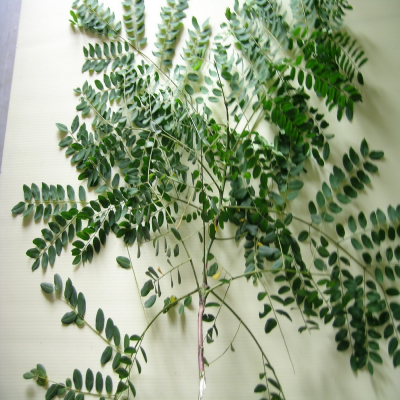Distribution and habitat: Throughout India.
Botany: A medium-sized unarmed deciduous tree about 20 m in height with a clear bole of 6 m having grayish brown bark with longitudinal fissures.
- Leaves: Bipinnate, alternate leaflets many, alternate, ovate-oblong, obtuse, glabrous, unequal-sided, dark green above. Petioles 5-10 cm long.
- Flowers: Pale yellow, in short peduncled racemes. Stamens 10, free, hardly exserted; anthers gland crested.
- Fruits: Falcately curved pointed pods, the valves spirally twisted after dehiscence.
- Seeds: Small, hard, shining, scarlet, lenticular-globose.
Chemical constituents: Plants contain robinetin, chalcone, butein, ampelopsin and dihydrorobeinetin; Bark contain stigmasterol, glucoside, saponin, oleonic acid and echinocystic acid. Leaves contain octacosanol. Seeds contain dulcitol and stigmasterol
Uses: Astringent and antirheumatic. Useful in colonorrhea, ulcers, pharyngopathy, haematuria, gout, burning sensation, vomiting, fever, hyperdipsia, giddiness, dysentery and hemorrhages.
Propagation: Seeds. Germination needs pre-treatment.




